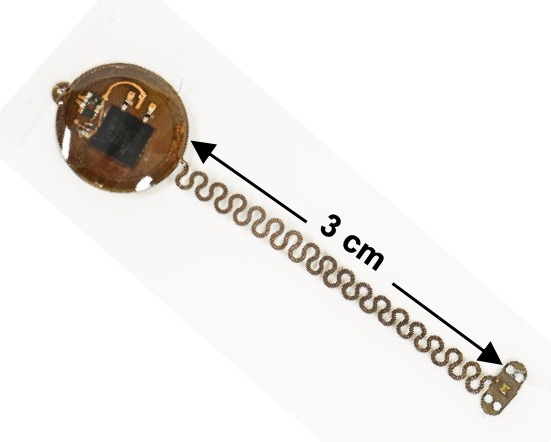
Researchers have developed and tested for the first time in vivo a miniaturized, battery-free pacemaker that supports optical and electrical multisite stimulation. (Courtesy of Dr. Efimov)
Researchers have developed and tested for the first time in vivo a miniaturized, battery-free pacemaker that supports optical and electrical multisite stimulation. The new device is powered wirelessly, omitting the weight and bulk associated with battery power, along with the need to replace or recharge, thereby allowing for indefinite operation.
Igor Efimov, the Alisann and Terry Collins Professor of Biomedical Engineering in the George Washington University School of Engineering and Applied Science, said this research lays out a roadmap for how cardiac implantable devices will be implemented in the future.
“We can maintain heart rate for a long time, which sets the platform for future exploration of our designs of flexible and stretchable electronics,” Dr. Efimov said.
Sudden cardiac death is the largest cause of natural death in the United States with over 300,000 adult deaths each year. Researchers hope this new device will help decrease the number of these deaths.
In current technology, the battery makes up the majority of the size and weight of a pacemaker. This can result in a largely visible device that sits on the upper chest and can cause significant dissatisfaction for patients. There is also no way to change the battery in a traditional pacemaker, meaning the entire device needs to be replaced when a new battery is needed.
By decreasing the size of a wireless pacemaker to about the size of a dime, the goal is for doctors to one day place several pacemakers across the heart. Having multiple wireless pacemakers on the heart at once can improve the quality of resynchronization therapy as the devices can be programmed externally to synchronize cardiac excitation and contraction, thus making the devices more efficient, effective and comfortable for patients.
This technology is still several years away from being tested in humans, Dr. Efimov said, but all the materials used in the device are FDA approved.
This research was a collaboration between Dr. Efimov’s lab and the School of Medicine and Health Sciences’ Department of Surgery. The flexible electronics were designed by Northwestern University’s John A. Rogers, an author on the paper.
This research was published in Nature Communications on Dec. 17.


